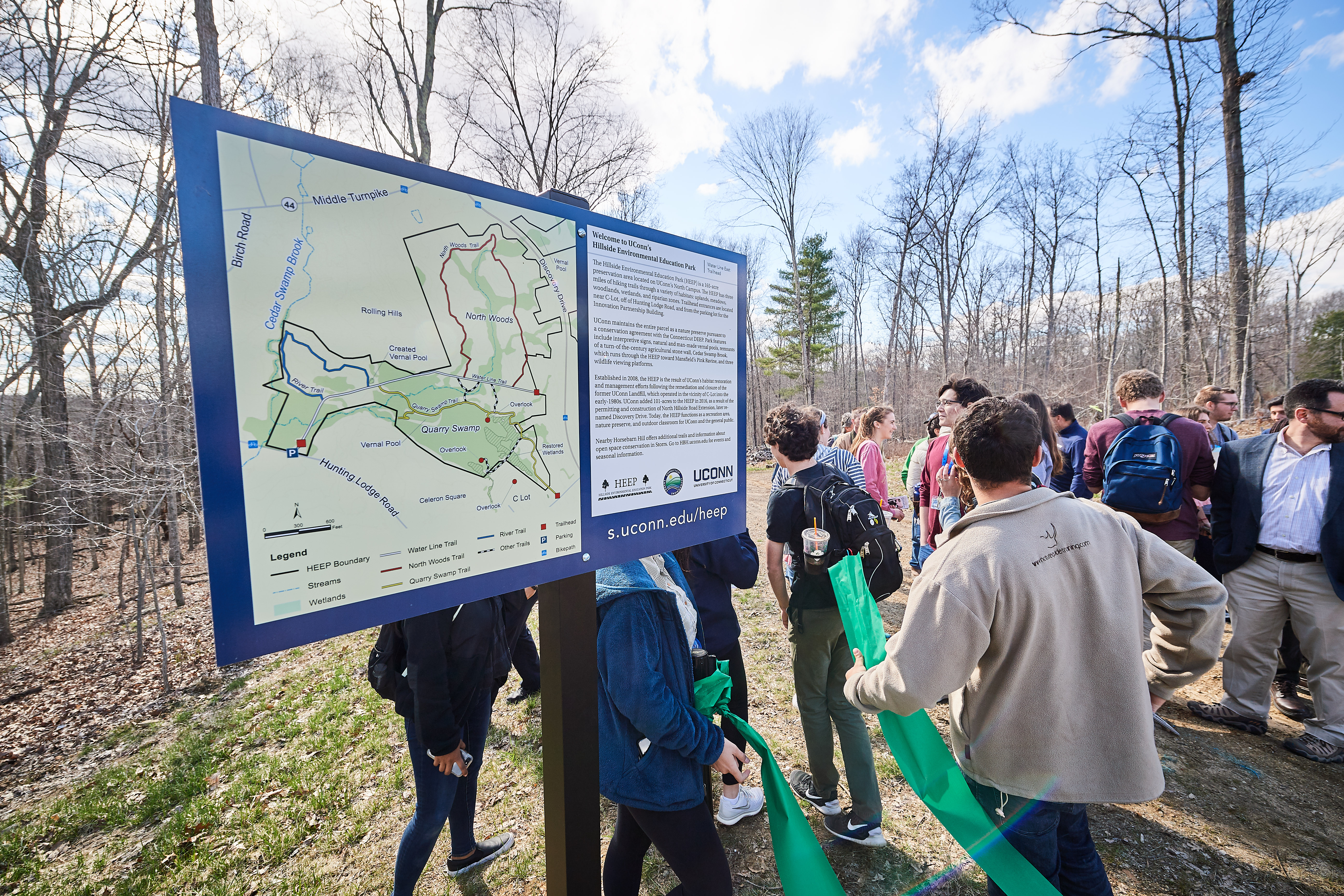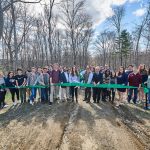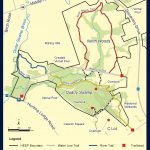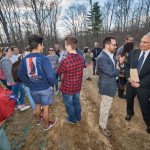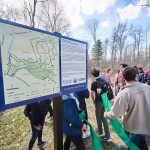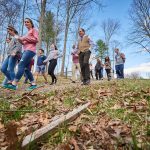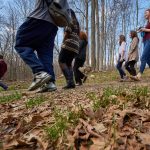The Hillside Environmental Education Park provides a quiet sanctuary and nature preserve for the UConn community, but isn’t that far from the hustle and bustle of everyday college life. The proximity of a nature park so close to the core of campus is an asset to UConn, and the opportunities at HEEP are now even greater with the recent addition of more land and trails and more than a dozen trailhead and interpretive signs.
HEEP first opened in 2008 in the North part of campus following the remediation and closure of the former UConn landfill, which dated back at least 50 years. It was established as a 64-acre preserve by a conservation agreement with the Connecticut Department of Energy and Environmental Protection (DEEP).
After UConn removed 40,000 cubic yards of contaminated debris and completed other aspects of an extensive cleanup, the University began the process of creating and restoring wetlands, and removing invasive species throughout the site. Now, 10 years later, the area once again supports healthy ecosystems and active wildlife habitat.
With the latest addition of land and trails, HEEP currently consists of 165 acres, with three miles of trails through a variety of habitats – uplands, meadows, woodlands, and wetlands. The entrances are located in C-lot, next to the Innovation Partnership Building, and on Hunting Lodge Road.
On April 26, a dedication ceremony was held for the expanded park, new interconnected and blazed trails, and improved signage. The ceremony was the final event in UConn’s semester-long Environmental Metanoia.
“The HEEP’s expansion and improvements are the result of hard work, dedication, and collaboration by people from all over campus,” said Rich Miller, UConn’s director of environmental policy. “It’s a real-life trash-to-treasure story, where UConn has not only cleaned up an environmental problem, but created in its place a terrific outdoor recreational and educational resource for everyone in the area.”
The new addition to the HEEP is covered under the amended state conservation agreement. The agreement serves to protect and preserve a complex of vernal pools and other natural resources throughout the park, while allowing the construction of Discovery Drive and future development of the Tech Park.
UConn faculty members from the Green Campus Academic Network and students of the EcoHouse learning community played a key role in writing, reviewing, and editing interpretive signs, and creating wooden trail blazes.
“This was one of the higher-profile landfill cleanups in the state of Connecticut over the years,” said Miller. “For a long time, this part of campus was an eyesore. Now, it is symbolic of UConn’s commitment to environmental stewardship and responsible growth. We’re developing a technology park and preserving a natural habitat side-by-side.”
The uses for the park range from recreational, such as walking, hiking, running, birding, and biking, to academic pursuits.
“There have been a number of classes, projects, and even research conducted out there,” said Miller. “UConn faculty and contractors are continually monitoring and recording a number of different species that live in the HEEP.”
UConn’s has a strong relationship with the DEEP, and several UConn graduates are on its staff.
“Trails are one of the most basic signs that life exists,” said Commissioner Rob Klee at the dedication ceremony. “They started when the earliest creatures crawled onto land the first time. Here in North America, trails for Native Americans eventually became roads and modern hiking paths.”
The park now features the original and new interpretive signs, natural and man-made vernal pools, and remnants of a turn-of-the-century stone wall. Cedar Swamp Brook runs through it towards Mansfield’s Pink Ravine, and there are three wildlife viewing platforms overlooking sections of the park.
“Trails provide the needed mental break from the hectic pace of our daily lives,” said Klee, “whether it is studying for finals, grading papers, running a large complex state agency or daily chores. For the students of UConn, this network of trails provides an opportunity to learn and explore their natural world.”
For more information, visit s.uconn.edu/heep.
